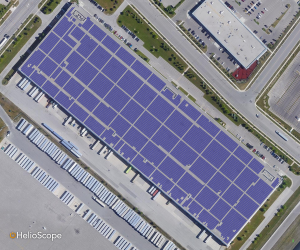
Grid power costs are generally on the rise. Solar net metering has reached grid parity in many markets. Does solar net metering make sense for your business?
Solar Feasibility Analysis
As a renewable energy technology, few are as visibly understandable and well known as solar photovoltaic (PV). It is perhaps the notion that all you need is the sun to generate power, with no moving parts, that makes this technology so elegant. What also makes solar power unique is that it can be scaled to the size of your energy needs, big or small.
Solar PV costs have been declining for decades, but have very recently come down to the point where investing in solar net metering is lower cost than purchasing power from the grid in many provinces and states in North America. See here
This is due to a combination of factors including capital costs, solar production or insolation, prevailing cost of electricity, incentives and ability to take advantage of tax savings. See here
Even if you are in a province or state where the economics of solar are attractive, there are other both technical and economic factors that impact the investment returns on solar. Is your roof structurally sound to handle the additional weight of a solar system? Can you connect to your utilities electrical grid? Are you a taxable entity and can you take advantage of accelerated depreciation that is available for investments in solar generation?
Understanding these factors as they relate to your building and energy use will influence if an investment in solar is a 10 to 20% return on investment.
Our team has performed detailed technical and economic feasibility analyses for a variety of large and small customers across Canada and the U.S. We can guide your preliminary assessment as well as connect you with implementation partners, taking your solar project from concept through to completion.
Desktop Feasibility

- Billing Analysis
- Consumption Analysis
- Preliminary Design
- Financial Analysis
- Summary of investment opportunity
Detailed Feasibility

- Structural Assessment
- Roof Assessment
- Electrical Interconnection Assessment
- Detailed System Layout
- Financial Analysis
